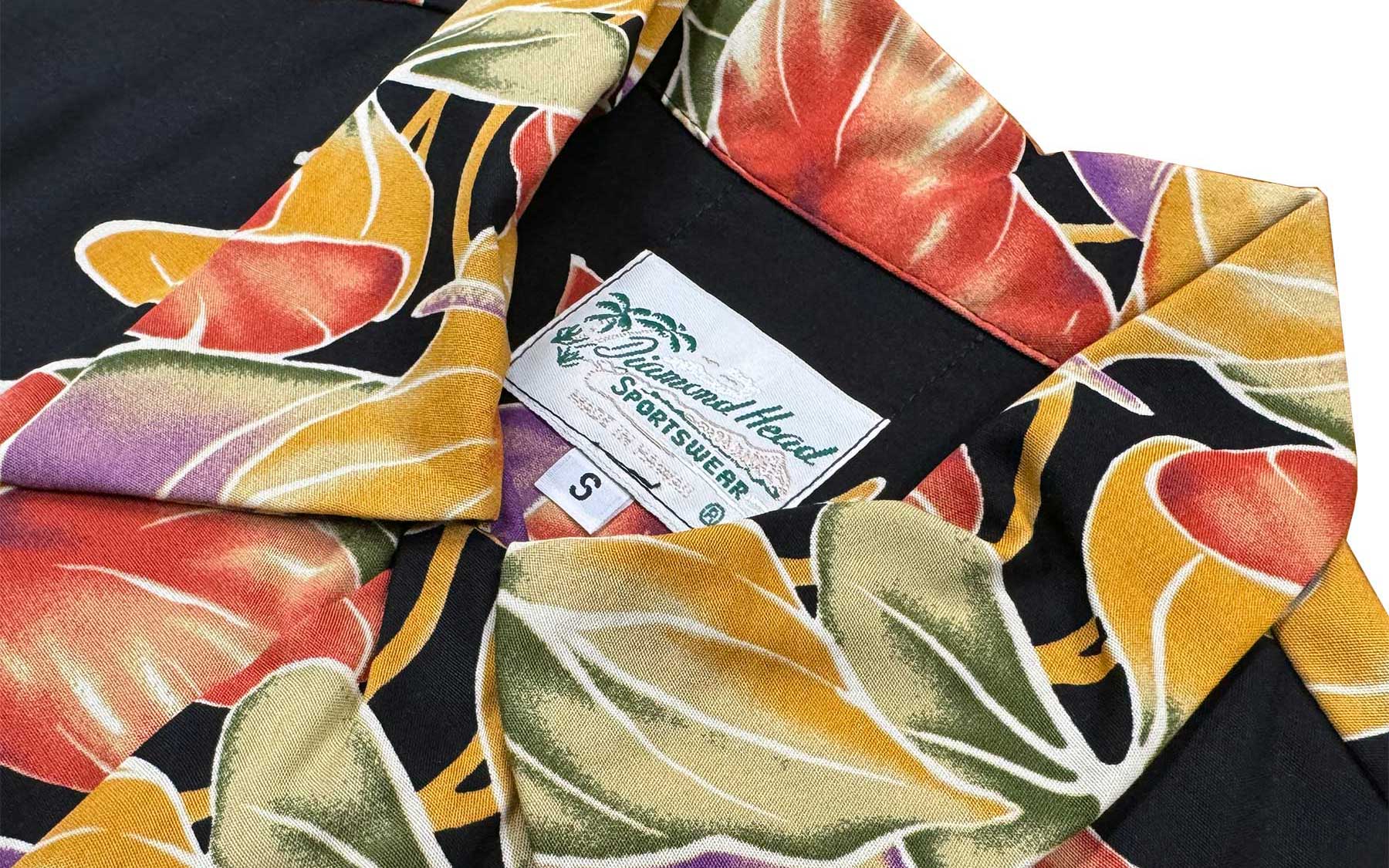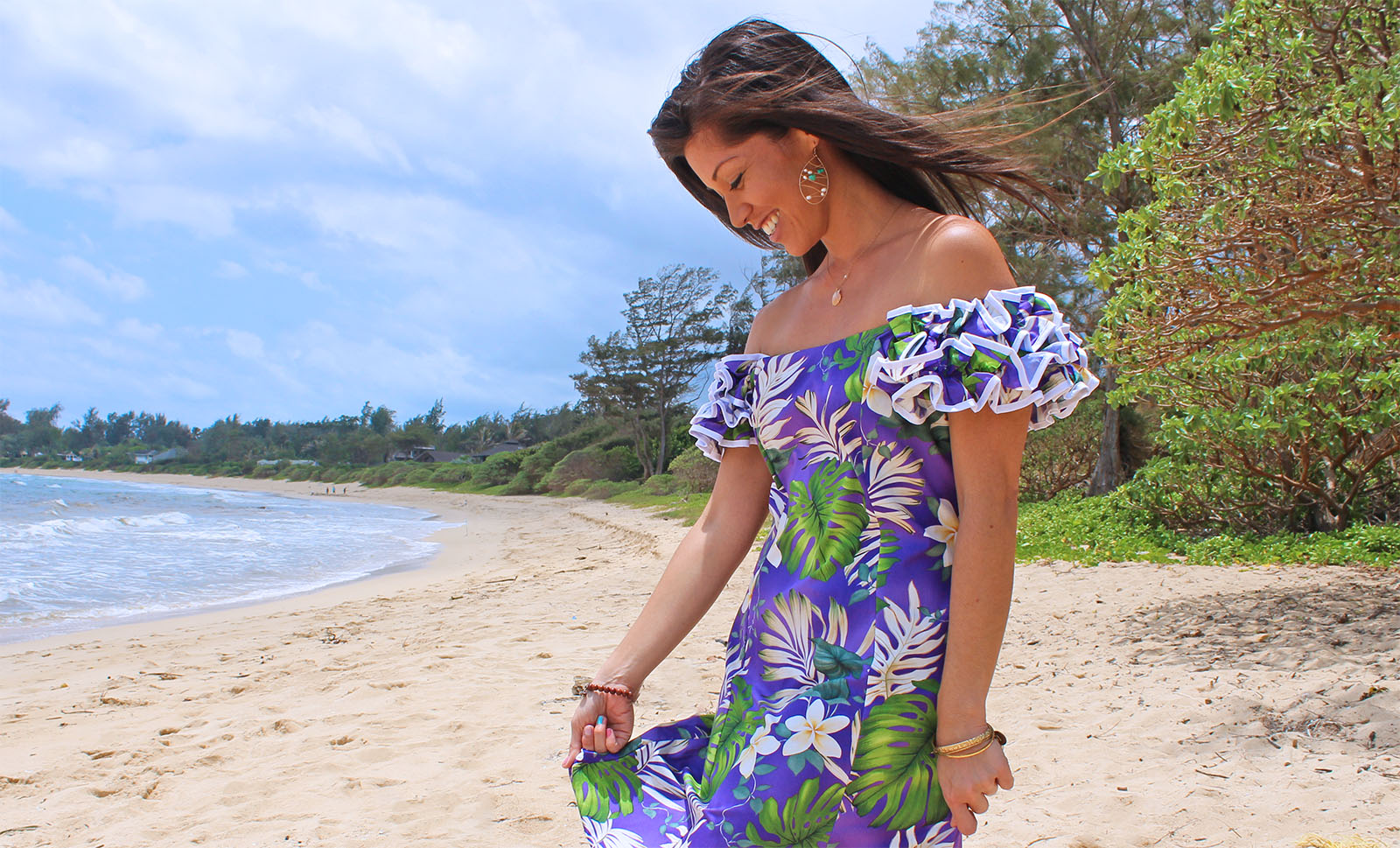A Rich Aloha Style History
The history of the Hawaiian Islands is rich and diverse in everything: its culture, its language and its traditions. This history is apparent in the choices of clothing, which we at Aloha FunWear love to nurture today in our line of Aloha shirts for men and muumuus for women. Although our men’s Aloha shirt, with its fun, tropical designs, seems a bit more straightforward, we often receive a lot of questions about the ladies’ counterpart to the Aloha shirt — the muumuu. The muumuu has a colorful, interesting history in the Hawaiian Islands.
The Beginning of the Muumuu
The story of the muumuu begins with the arrival of the Christian Protestant missionaries in the 1820s. These outsiders found many South Pacific women to be scantily clothed, wearing very little to nothing, aside from tattoos on their skin and feathers on their head. Some women would wear a “pa’u,” which looked like a hula skirt, and a “kihei,” which was a type of a rectangular shawl. These clothing items were all made from materials that were found in their tropical environment, most notably “tapa,” a barkcloth made from plant fibers. The tapa was decorated with bamboo stamps and dyed with vegetables dyes. Some of these tapa fabrics were perfumed, which was achieved by beating scented flowers into the barkcloth.
Head-to-Toe Coverage
To cover the Hawaiian women’s skin up as much as possible, the missionaries introduced a two-piece ensemble. The undergarment, a “holoku,” was a floor-length, loose dress that featured a high-necked yoke. The outer dress acted like a chemise and was called a “mu’umu’u,” which was literally translated to mean “cut off,” because this part of the dress originally lacked a yoke. Predictably, this two-layer dress was uncomfortable and hot in the tropical South Pacific climate. For this reason, the Hawaiian women adopted the cooler muumuu for everyday wear and saved the more formal holoku for more formal occasions. The holoku became the formal traditional dress for Hawaiian women. These pieces were made from beautiful fabrics and had intricate details like ruffles at the bottom hem; some holokus had long trains for evening wear, special occasions and weddings.
Muumuu’s Mainstream Evolution
The muumuu’s and the holoku’s styles evolved to reflect European and American influences. The muumuu underwent a fashion transition from tropical island wear that was loose and cool out of necessity, to a fashion trend in the mid-20thcentury. Designers like Halston, Yves Saint Laurent and Christian Dior integrated muumuus (also called caftans) down their runways, thrusting these garments into the mainstream. Television shows like Dynasty featured the muumuu as part of their wardrobes.
The Modern Muumuu
Today’s Hawaiian wahine loves her muumuu! She considers this comfortable, loose-fitting dress a must-have dress in her wardrobe. The muumuu is also part of the Aloha Friday tradition, much like the Aloha shirt for men. The muumuu is decorated with brightly colored patterns that reflect the Hawaiian tropical island feel, like bird of paradise flowers, ginger blossoms, orchids, hibiscus, palm fronds and more. For weddings or on Sundays, you may see a more formal version of the muumuu that is all white.
Hawaiian women’s love of the muumuu is in its comfort, its versatility and its accessibility to women of all shapes and sizes. For lounging, for date nights or for walks on the beach, the muumuu is a go-to for many modern Hawaiian wahine.




